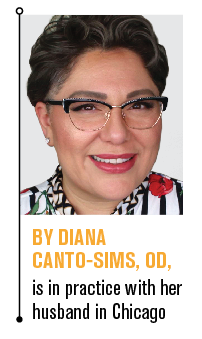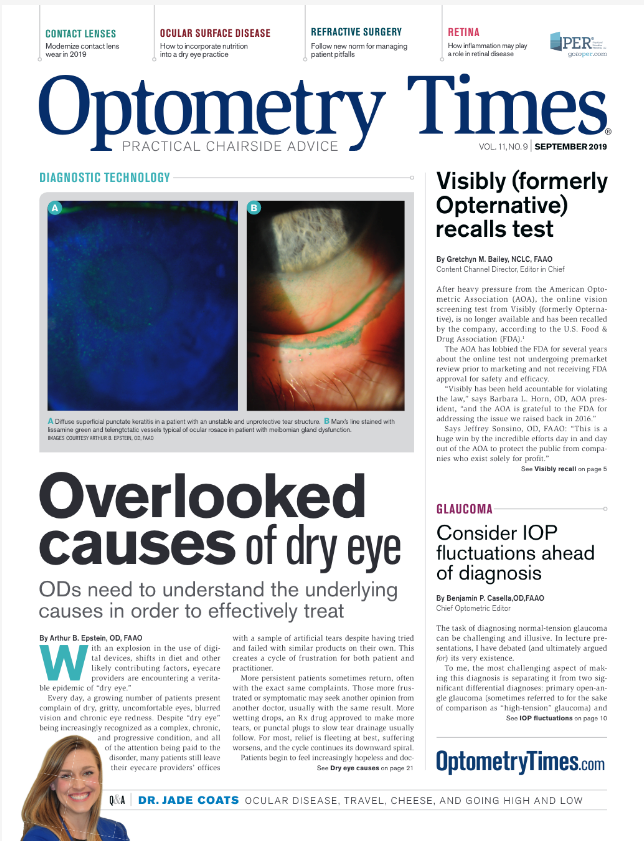How implementing a hiring process netted a great staff


A well-established hiring process can help ODs onboard the best candidates in town for their practices. When done well, it can lead to hiring loyal, smart-working team players who can assist in growing a practice and creating an uber customer experience for patients.
Over the past 15 years in practice, we have made some serious hiring mistakes.
From hiring staff who stole and embezzled from the practice to receiving ridiculous unemployment claims from the U.S. Department of Labor, we have learned a lot from those mistakes-what works, what does not, where the best candidates hang out, and the best way to interview and onboard them.
Previously by Dr. Cantos-Sim: 5 marketing tips to grow a practice without breaking the bank
Hiring, onboarding, and retaining staff was not easy in the past. Staff would call in sick daily or not show up. We once had a full day of patients booked, and a staff member told us she had to leave immediately because she thought her husband was cheating on her while she was at work. She left. She was our only employee at the time.
We confess: We used to just hire a “body”-any “body,” as long as this “body” could answer the phone.
People would quit the same day with no notice. Staff would go to lunch and never come back, and we would get a call from the Department of Labor for unemployment benefits. It was horrible.
We learned the hard way. But other ODs do not have to.
Candidates can look amazing on paper. They can tell a potential employer everything she wants to hear in an interview.
But how can an OD determine if a candidate is a good fit for her practice?
In our practice, we have staff who have been with us for over a decade.
Related: How staff can help differentiate your practice
We also have seasonal staff we call on when we are overbooked or for busy seasons, such as back-to-school time. These staff members are happy to get away from their everyday lives and help out to make extra money-even if it is just for a couple of hours a year.
Our practice is able to have seasonal backup staff because of the way they are brought onboard.
When hiring staff in the past, we experienced what some experts call “revolving door employee turnover.”1-4
Here are three phases our practice uses to attract, retain, and ease hiring while onboarding the best candidates in town.
Related: 3 strategies to grow your practice
1. Application
The first phase is an online application that allows a candidate to schedule a phone interview. If the candidate does not follow directions or does not fill out the form entirely, he is unable to schedule a phone interview.
This process filters the best candidates for our practice: those who read and follow instructions.
For this phase, our practice uses an online scheduler system called Acuity Scheduling.5 While there is a free version available, our practice uses the paid version, which allows for attaching videos, links, sending automatic email reminders to candidates, setting up different accounts for staff members, scheduling online performance reviews for current staff, and scheduling business phone calls.
The beauty of this online scheduling system is that an OD or hiring manager can set her availability. The candidate then chooses his time zone and appointment time slots. There is no going back and forth trying to schedule the best day and time that works for both parties.
Related: Online appointing to surge; will you offer it?
All questions in the application are required to be answered by the candidate. Otherwise, he cannot schedule a phone interview.
Applicants are encouraged to upload their resumes; however, some candidates look fantastic on paper but fail to measure up in real-life scenarios.
That is why it is crucial for ODs to know specific information-such as experience in optical and customer service-before they decide to onboard a team member.
While this is ideal, ODs are often open to candidates who may not have optical experience but have worked in previous jobs that gave them skills that will help them become an asset to their teams.
All of the questions we ask in the application are carefully curated. The questions are based on the position we are hiring for.
Once the application is complete, the applicant can schedule a phone interview. Our application process takes 15 to 20 minutes to complete. If a candidate is interested, he will take the time to complete it. If the candidate is looking for just any job, he will likely get bored, lose interest, or prefer not to continue the application process. This is a blessing in disguise because we don’t waste time on candidates who are not committed or don’t take seriously our onboarding process.
Related: What to consider when hiring an office manager
The phone interview
We call the candidate at the number he gave us on the day and time they scheduled their phone interview. If he is not available, he has already proven to have bad organization and time management skills, and will not be an ideal hire.
The phone interview is important because we want to know what the candidates sounds like over the phone. This person will be answering our phones, scheduling appointments, and speaking to patients daily. We want to make sure he speaks clearly.
In our practice, 80 percent of our patients speak Spanish. We do most of our phone interview in Spanish to be able to determine if candidates can communicate efficiently, effectively, and accurately with our patients.
Related: How I built a customer service-centered practice
During the phone interview, we ask open-ended questions like:
• What do you value?
• Tell us about a time you made a mistake, but you were able to turn it around.
Ask curated open-ended questions that will help you find the best candidate for the position you are looking to fill in your practice.
When the phone interview goes well, we invite the candidate to our second phase.
Related: Getting your staff off to a great start 2. Face-to-face interview
When the candidate passes the phone interview, he is sent a link via email using Acuity Scheduling to answer three questions and schedule the in-person face-to-face interview.
The three questions we ask at our practice are:
• How would your best friend describe you?
• Describe where and how you see yourself in 5 years?
• Tell me about a time you had a negative experience with a coworker or client who complained about you. How did you fix the problem to improve the relationship and resolve the situation?
ODs can ask any question they believe is congruent with the position they are looking to fill. It is essential to ask questions that encourage an engaging conversation and helps an OD get to know the candidate better.
Before the interview, we invite prospective employees to a “backstage” tour of our practice. We call it a “backstage” tour because we show them everything that happens “behind the scenes,” as in our on-premise lab, administrative offices, a meeting room, and lounging areas. We believe it is vital that candidates know that “the stage” is what patients see, hear, and experience. “Backstage” is what goes on behind the scenes that help us deliver an uber customer experience.
One of the most critical aspects of the face-to-face interview is how candidates interact the moment they walk into the practice for the interview. Do they have a teammate attitude? Or are they condescending and rude to staff when they come in?
We encourage our entire staff to interact with candidates before we conduct our face-to-face meeting or during our backstage tour to determine if candidates have a good attitude toward the team.
When the candidate has passed the second phase, we invite them to Phase 3.
Related: Revamp your patient handoff
3. Paid working interview
At the end of the day, an employer wants to know if the candidate has a great attitude, can do the job, treat patients with compassion, and work well with a team. The best way to do this is by having a working interview.
During the working interview, we give the candidate an overall look at an average day in our practice. We look at how fast the candidate learns as well as how she interacts with our staff and patients. We will usually know after a couple of hours if the candidate is a good fit.
Wrapping up
When executed in order with every candidate, these three phases funnel in the most qualified candidates.
Read more by Dr. Canto-Sims here
References:
1. Huhman HR. 4 tips to stop the revolving door of employee turnover. Inc. Available at: https://www.inc.com/heather-r-huhman/4-tips-to-stop-revolving-door-of-employee-turnover.html. Accessed 8/14/19.
2. Tracy M. Employee turnover … is your employee entrance a revolving doo? Omni Human Resource Management. Available at: https://omnihrm.com/2014/02/28/employee-turnover-is-your-employee-entrance-a-revolving-door/. Accessed 8/14/19.
3. CEDR HR Solutions. Stop the revolving door! 11 tips to lower employee turnover. CEDR Solutions. Available at: https://www.cedrsolutions.com/lower-employee-turnover/. Accessed 8/14/19.
4. Davies-Greenwald E. How can we stop the revolving door of employee turnover? McQuaig. Available at: https://blog.mcquaig.com/revolving-door-of-employee-turnover. Accessed 8/14/19.
5. Acuity Scheduling. Available at: https://acuityscheduling.com/. Accessed 8/14/19.

Newsletter
Want more insights like this? Subscribe to Optometry Times and get clinical pearls and practice tips delivered straight to your inbox.